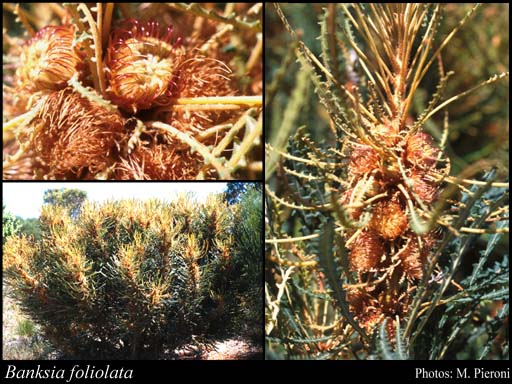- Reference
- Austral.Syst.Bot. 20:68 (2007)
- Conservation Code
- Priority Four
- Naturalised Status
- Native to Western Australia
- Name Status
- Current
Erect or spreading, dense, non-lignotubeorus shrub, 1-2 m high. Fl. yellow-brown, Sep to Nov. Sandy soils. Rocky quartzitic slopes.

Scientific Description
Shrubs, 2-3 m high; branchlets hairy. Leaves petiolate, alternate, 130-230 mm long, 10-20 mm wide, hairy; petiole 5-50 mm long; lamina flat, once divided, pinnately divided, divided to the midrib, with 10-35 lobes on each side, the margins recurved. Inflorescences tomentose (with matted or tangled, soft, woolly hairs) or villous (with soft, shaggy, weak and straight hairs), cream; innermost bracts 7-8 mm long, hairy. Perianth 17-20 mm long, hairy, all over, limb apex hirsute (with long, rough and coarse hairs), without awns; pistil 20-24 mm long, curved, style glabrous. Follicles hairy, hirsute (with long, rough and coarse hairs), oblong, 11-14 mm long. Flowers in October or November. Occurs in the South-west (SW) Botanical Province(s), in the Avon Wheatbelt (AW), Jarrah Forest (JF), Mallee (MAL) or Esperance Plains (ESP) IBRA subregion(s). : Conservation code Priority Four (P4).
Distribution
- IBRA Regions
- Esperance Plains, Jarrah Forest.
- IBRA Subregions
- Fitzgerald, Southern Jarrah Forest.
- Local Government Areas (LGAs)
- Cranbrook, Gnowangerup, Plantagenet.